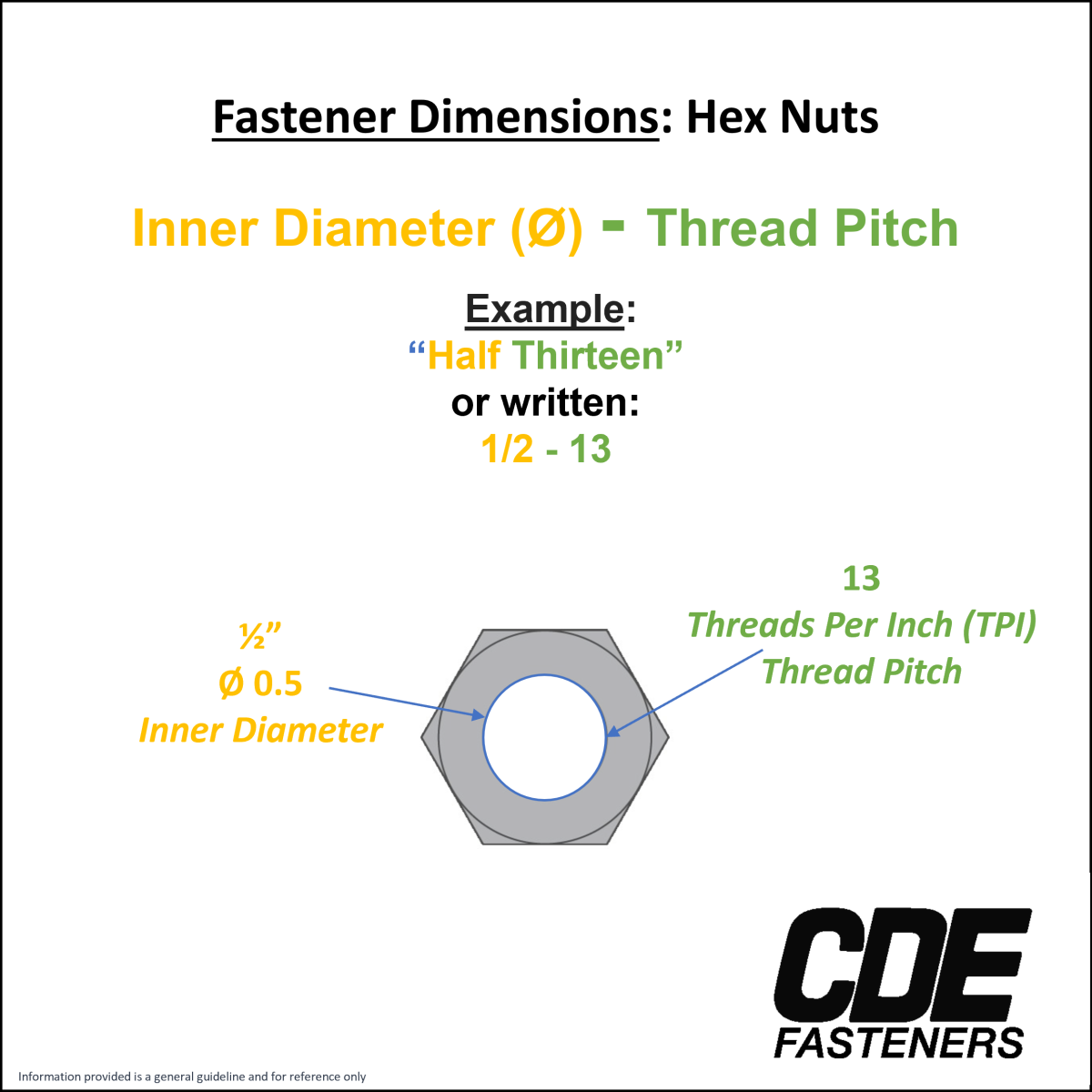 When looking at the measurement 1/2 - 13 some may not understand that this is the correct format for dimensioning a nut, others might even think it is an equation. However, this is a more common occurrence than you may think. This short blog aims to assist in defining how nuts are properly dimensioned and clear up any confusion you may have! This example is how the inside or inner diameter (1/2) and thread pitch (13) of a nut are correctly identified.
When looking at the measurement 1/2 - 13 some may not understand that this is the correct format for dimensioning a nut, others might even think it is an equation. However, this is a more common occurrence than you may think. This short blog aims to assist in defining how nuts are properly dimensioned and clear up any confusion you may have! This example is how the inside or inner diameter (1/2) and thread pitch (13) of a nut are correctly identified.
Fractions that are followed by a dash ( - ) are, in most cases, referring to a diameter - thread pitch. In this example: 1/2-13, the diameter is 1/2 followed by a thread pitch of 13.
There are a variety of different type of nuts, each with different uses and features. If you are unsure which type of nut you are looking for in your project, please take a look at all the nuts on our website. If you do not see the type of nut you need, please contact us for further assistance.
Below, we have outlined additional characteristics that you may find useful in regard to both the diameter and thread pitch of a nut, what this means, and how each of these dimensions are measured. Please look at our blog Fastener Facts: Tips & Tricks for more help with defining your fastener!
Diameter – The diameter of a nut refers to the measurement of the distance between the inner surface of the threaded section. This is contrary to how screws or bolts are measured . In this example (1/2) there is a nominal measurement of 0.5 inches between opposing threads throughout the inside of the nut. Essentially an imaginary cylinder that is nominally 0.5 inches in diameter is inside diameter of this nut. For additional information please see our blog What to Know About the Threads of a Fastener.
Thread Pitch – This is the measurement of the distance between adjacent threads of a fastener and is identical to how the thread pitch of screws or bolts are measured. When using Standard also known as Unified Thread Standard (UTS) this is measured by the amount of complete thread revolutions per one inch, referred to as TPI. On the other hand, for a metric fastener, this measures how many millimeters separate adjacent threads at their peaks. However, the "peaks" of a nut are considered the inner most point of the fastener, contrary to outermost for a bolt or screw/bolt. For additional information please see our blog What to Know About the Threads of a Fastener.
Additional Information: You may be wondering where thickness or length of a nut comes into play. This measurement is often excluded from nuts, especially when dealing with finish hex, heavy hex , hex jam, or machine screw nuts. In these cases, the thickness of the nut is considered a standard measurement. If there is a callout for the particular nut you are looking for we have spec sheets that call out that measurement or you may be looking for a nut that requires length, thickness or grip/panel range to be called out like rivet nut, tee nut, high hex, or cage nuts.
The distance across the flats are sometimes a critical dimension, especially when using a socket for installation. This is also considered a standard measurement. If you find this measurement is critical for your application you may be looking for a machine screw nut, an exception to this rule where this dimension is specified, or you can check the 2D/Specifications sheet for the particular nut you are looking for.
Finished Hex Nuts are the most commonly used nut in most applications. However, nylon insert stop nuts and flange lock nuts are often needed in certain applications. If you find that you are unable to locate the nut you require for your application or if you need further assistance, please contact us, we are here to help!
